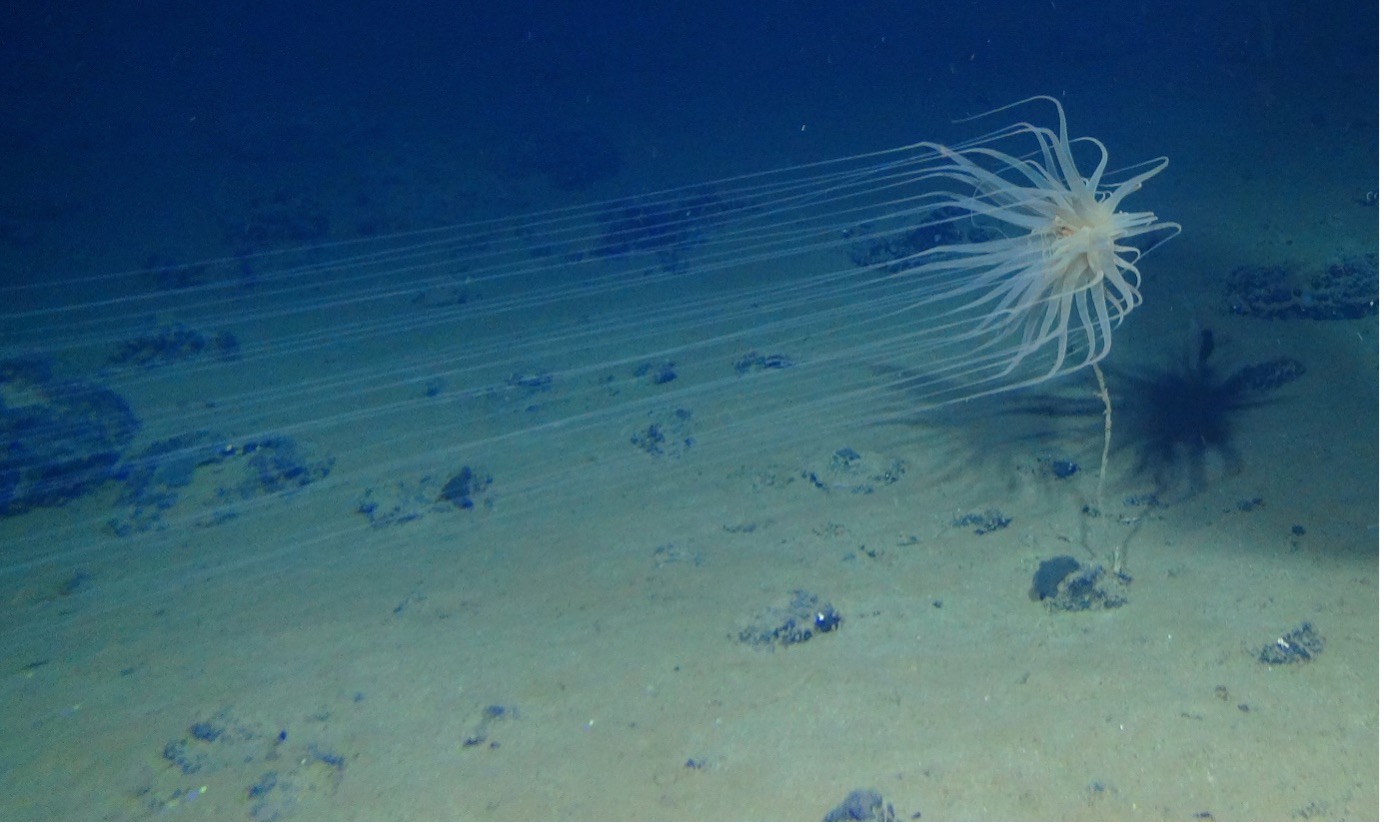By Rachel Pearce (Director of Business Development)
For anyone who missed last week’s OBN lecture, ‘Into the Deep: Biodiscovery in the World's Largest and Least Explored Ecosystem' I thought I’d share the best version that AI and I could create of Adrian Glover's opening slide. However, contrary to expectation, not all researchers at the Natural History Museum study dinosaurs or dress up in “Merry T-rexmas” jumpers, apparently.
Adrian took us on a fascinating journey of discovery to the depths of the Abyssal plain, a region of our globe that was relatively unexplored until as recently as the 1960’s and 70’s. It was at this time that scientists became interested in hyperthermalism under the sea. Chemists had long been aware that this must be occurring and, held a belief that no life could exist 5,000 leagues under the sea. They saw no value in taking any biologist with them in 1977 when they deployed the deep-sea vessel ‘Alvin’ just off the Galapagos Rift. Here they journeyed down to a depth of 2,000m to survey a vent and their findings surprised everyone. Expecting to observe barren conditions when looking out of the window they were stunned to see clam shells around 6 inches long. Some 2 years later, they rightfully returned with a full contingent of biologists among their research team to collect and preserve samples of Hydrothermal Vent Tube Worms, a symbiotic entity full of bacteria. Adrian highlighted how several research groups worked at a tremendous speed of discovery to publish their findings in elucidating the mysterious biological processes including oxidation of sulphites by these species.

A Century earlier in the 1870’s, HMS Challenger had been sent on a mission by the Royal Geographic Society to circumnavigate the globe over 2 years, studying the physics, chemistry and biology of the oceans. At every station, the team had a system for measuring the depth and collecting geo samples and on 16th Sept 1874 they reported bringing up ‘manganese nodules, the size of potatoes filling 2 casks.’ In 1965, extensive ocean photography showed the same mineral rich nodules littering miles of ocean floor – a valuable resource spurring the rise of many deep-sea mining operations.
One might similarly assume that this inconspicuous environment would be absent of life forms – we’re talking about 4,000 or more meters below sea level – but luckily there were a community of scientists interested in sampling this abyssal plain and they identified huge faunal diversity of deposit feeders. The mud is literally full of worms, molluscs and crustaceans, largely undescribed species that have been evolving down there, undisturbed through an estimated 50 million or more years of stability.

If you’ve ever felt like your research is uniquely challenging then contemplate the technical struggle of collecting, preserving and reliably understanding the biology of these life forms. Existing at immense pressures and at temperatures ranging from the very stable 1.8 degrees deep seabed to above 250 degrees at thermal vents. It is impossible to eliminate interference from removing specimens from their native environment. But some scientists do strive to face these challenges and Adrian shared details of various pioneering discoveries.
Adrian articulated that there is a real need to demonstrate the benefit of declaring protection zones in such inaccessible areas of the ocean and hence the “DEEPEND: Deep-ocean resources and biodiscovery” project was launched to gather information on the importance of protecting the deep sea.
There has long been interest in identifying novel medicinal agents derived from natural products and so it would be reasonable to hypothesise that unique bioactive substances could be discovered and developed from the abyssal species. Deep sea actinobacteria have been successfully cultured and screened against pathogenic bacteria as one such study in the fight against antimicrobial resistance (AMR).
Lastly, from life under the oceans Adrian led us to contemplate the possibility of life beyond earth as we discover other occurrences of hydrothermal vents in our solar system, such as Enceladus, the moon of Saturn which reportedly has all the ingredients required for life….

Many thanks to Adrian for enlightening us all on these secrets of the depths and to OBN for another wonderful lecture evening.
Domainex has extensive experience in the research around natural products; derived from plants, animals, or microorganisms. Our analysts employ various chromatographic techniques to isolate and purify active compounds from complex natural extracts and confirm their characterisation by NMR and mass spectrometry. Our medicinal chemistry teams can work on the modification of natural products for improved potency, selectivity, and pharmacokinetic properties to invent novel therapeutic candidates.
If you would like to find out more, contact us at enquiries@domainex.co.uk.
